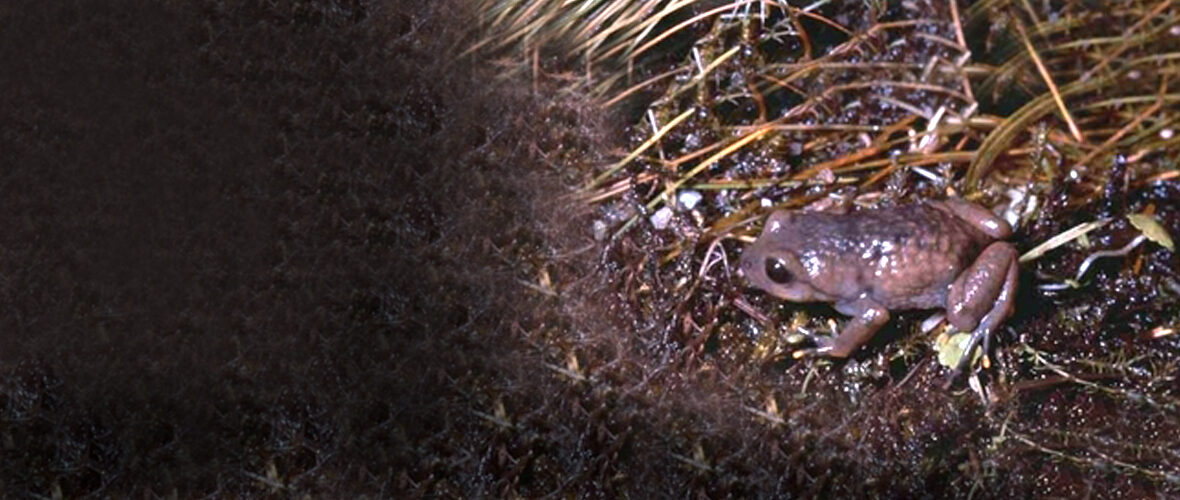
The Itatiaia highland frog is a small frog species native only to the Itatiaia Mountains of Brazil. These anurans prefer to dwell in leaves, mulch, and stones in sparse forests, open grasslands, and even in burrows. Sadly, due to the ever-spreading threat of Batrachochytrium dendrobatidis (Bd) these frogs have, for the most part, become potentially extinct in the wild. The IUCN lists these frogs as Critically Endangered or possibly Extinct. The last survey listed an estimated 49 individuals. But that was in 2021.
First the Stats…
Scientific name: Holoaden bradei
Weight: Up to .5 ounce
Length: Up to 1.89 inches
Lifespan: Unknown
Now on to the Facts!
1.) As is the case in frogs, the females are larger than the males.
2.) They live at up to an 8,530 foot elevation.
3.) These frogs produce a variety of calls, including up to 11 distress calls.
4.) Other threats to this species are habitat loss at the hands of residential and commercial development, deforestation, and mining; UV radiation; and wildfires.
5.) Itatiaia highland frogs are nocturnal (active at night).
But wait, there’s more on the Itatiaia highland frog!
6.) There frogs are terrestial (spend their lives on the ground).
7.) Like other frog species, the males have vocal sacs that are used to produce mating calls.
Did you know…?
These frogs breed through direct development (The young are born as froglets and skip the tadpole phase).
8.) These frogs feed on a variety of small insects and other invertebrates.
9.) Just like other amphibian species in the world, these frogs are important as indicator species, which aid in dictating the overall health of the surrounding forest.
10.) It is presumed that these frogs lay up to 10 eggs.
Be sure to share & comment below! Also, check out the Critter Science YouTube channel. Videos added regularly!
Want to suggest a critter for me to write about? Let me know here.
Some source material acquired from: Wikipedia & IUCN
Photo credit: Celio Haddad



